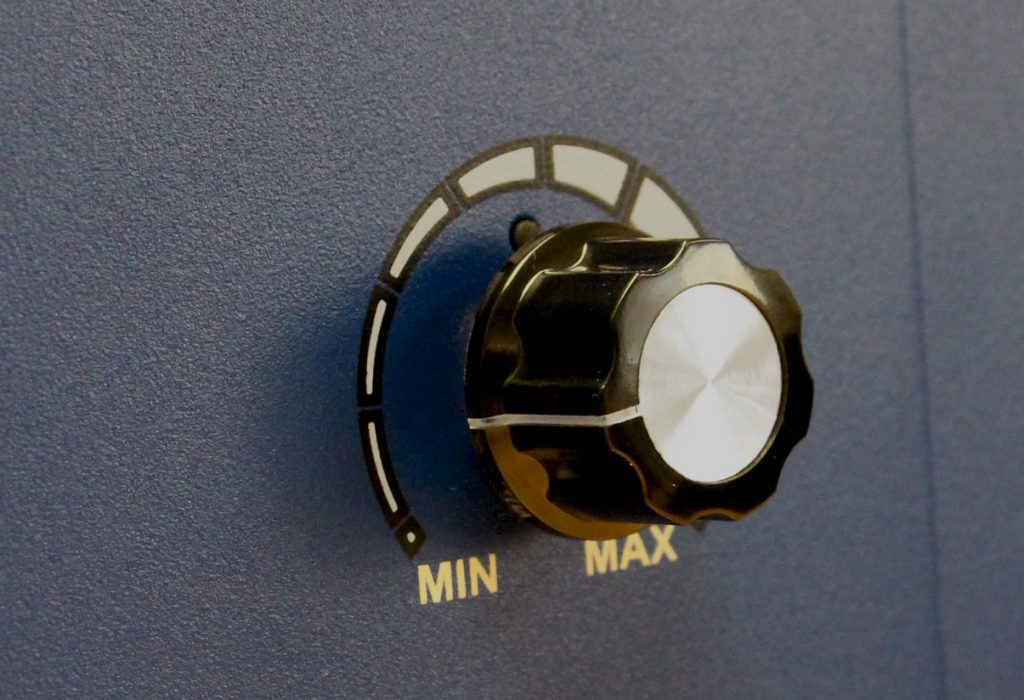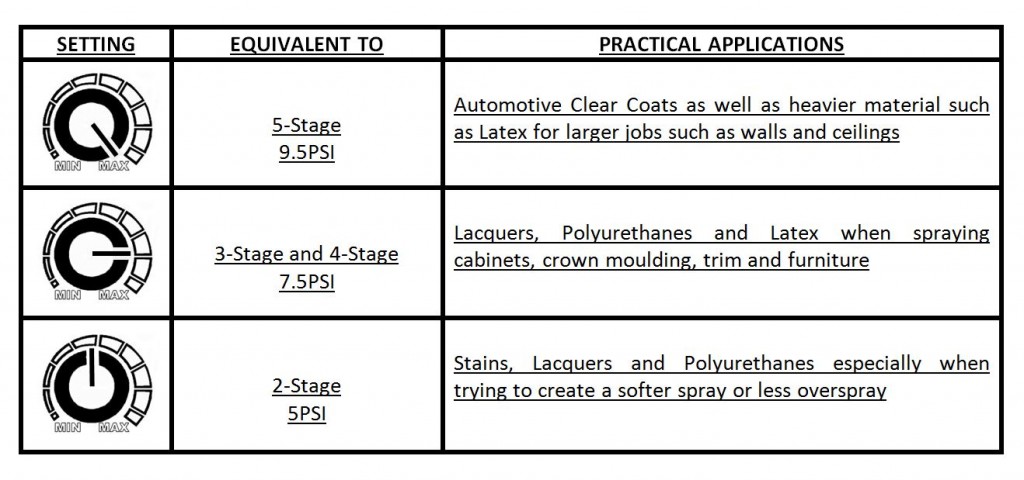Variable Speed Controller Dial
Q5 Platinum™ Variable Speed Controller Dial
The Variable Speed Controller is assembled on the Fuji Spray Q5 Platinum™ Turbine.
This model was introduced in 2015 and this blog describes the best way to use this new feature.
What is a Variable Speed Controller Dial?
The user now has the ability to adjust the psi/cfm to the optimum needed to perfectly atomize the materials being sprayed, while also reducing over-spray to a minimum.
To decrease air pressure, simply turn this dial counter-clockwise. To increase air pressure, turn the dial clockwise.
HOW TO USE THE SPEED CONTROLLER
1) Determine the viscosity of the ‘paint’. If it appears to be too thick, try thinning 10% with the appropriate thinner. Pour a smaller amount of this paint into the cup.
2) Start off with the variable speed control set to full power (turned clockwise to the maximum).
3) Adjust the spray gun fluid control to a medium spray and the pattern control knob set to a 6” – 8” sized fan.
4) Spray a wet coat onto a horizontal board and allow to dry.
5) Once the paint is dry, check the quality of finish. Is it smooth, fairly smooth, rough or bumpy?
First Scenario – Desired Result
Let’s assume the finish result is as desired – this means we do not need to thin the paint more. So to reduce over-spray only, we can begin dialing down the pressure at the variable speed control dial.
Re-test spraying at the reduced pressure to see if the quality of finish is affected.
At some point as you reduce the pressure ‘orange-peel’ becomes evident. (For an understanding as to what “Orange- Peel” is click here). When this happens turn the dial back to where there was no ‘orange-peel’.
Congratulations you have set the most efficient pressure for the particular paint you are spraying at that viscosity. The over-spray and bounce-back will be the least it can possibly be.
Second Scenario – Undesired Result
Never fear if at first you don’t succeed…try and try again!
Should the finish quality of the first test spray be unacceptable – this means that the paint is too thick to be atomized properly even at full power. Thinning the material more or adding a reducer (flow out additive) must be considered. Then re-test the spray as before. Continue this process until you achieve the desired result.
Variable Speed Control Dial Settings
The chart below displays realistic expectations and applications for the different settings of your Variable Speed Control Dial.
Always remember that the above chart is a general guide.
It’s best to set the Variable Speed Control Dial to suit your style of spraying as well as the environmental conditions that your projects are exposed to such as dust, temperature, humidity, etc.




